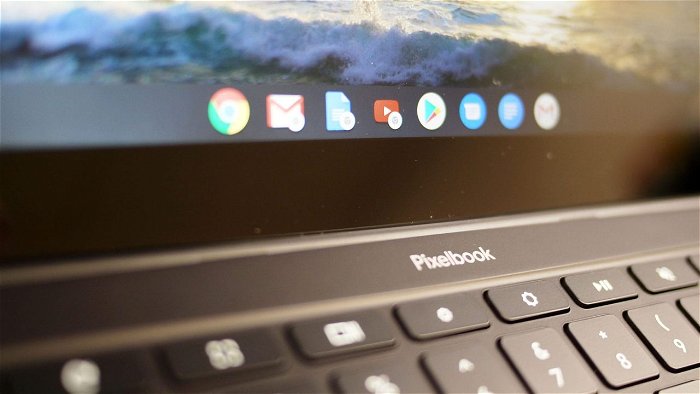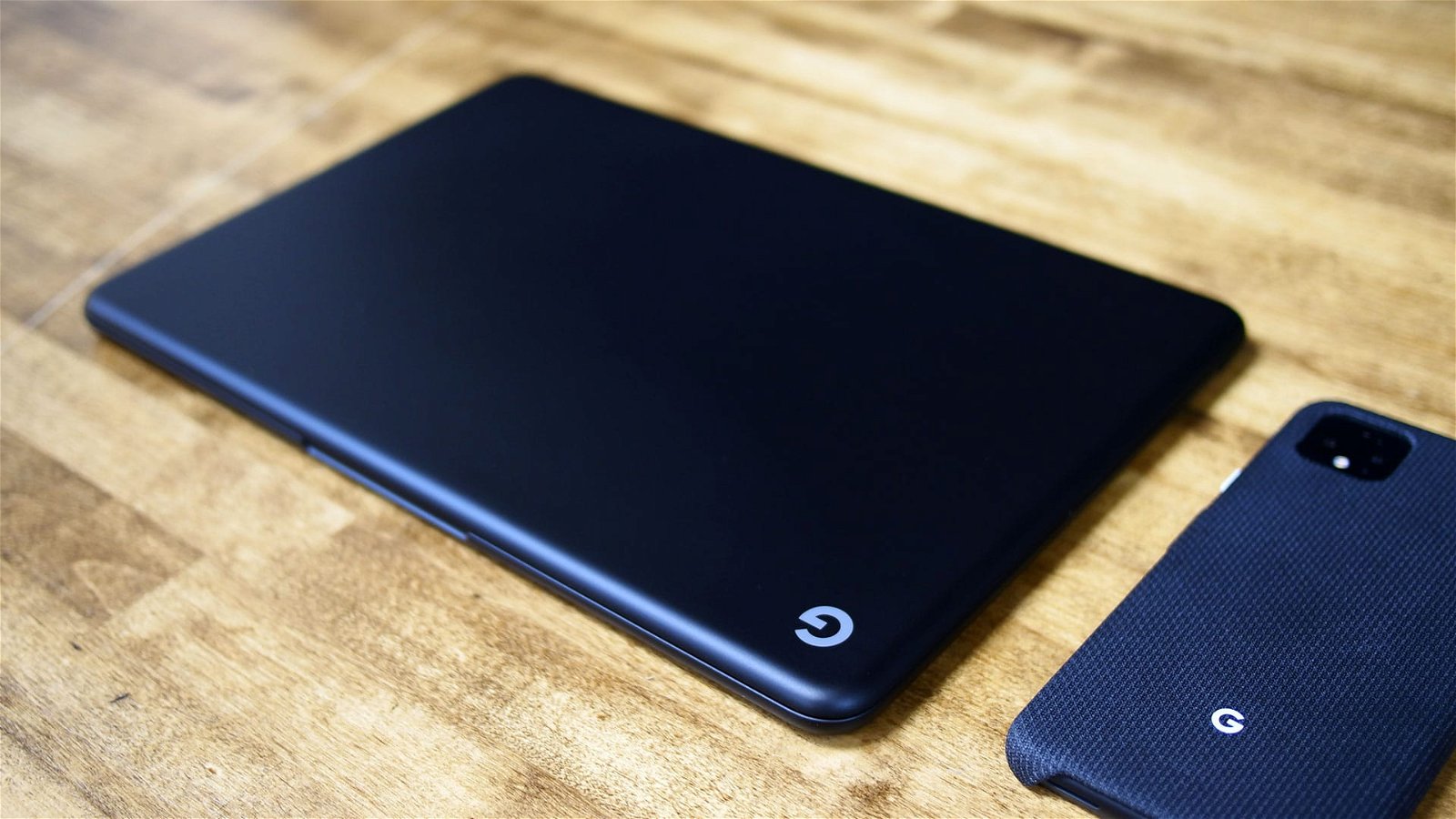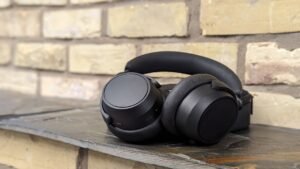Since Chome OS hit the scene, I have wanted to dive in and make it my primary driver. It is a slick and fast operating system built on a rock-solid foundation that is just easy to use.
As I have watched the OS evolve from year to year, I keep wanting to believe it is possible to make the switch, yet I keep being held back by minor issues or a simple lack of compelling affordable hardware. Google looks to give a new group access to its streamlined OS with a more affordable—and stunning—new entry to the Pixelbook lineup: the Pixelbook Go.
Before we go any further it should be noted that while this device carries with it the Pixelbook name, this is not a Pixelbook 2. While it is a stunningly crafted piece of hardware that feels like a best-in-class Chrome OS-powered laptop, it does not transform into a tablet. The Pixelbook Go is, at its core, just another Chromebook that looks to make the computing experience as easy as possible. And while it is a best in class device for this purpose, it is also around $100 more than some already fantastic Chrome powered hardware.

For that money, the Pixelbook Go feels just a bit more polished than the competition. The bright and clear 13.3-inch 16:9 1920 x 1080 screen feels vibrant and sharp for all productivity work. The hinge on the device also feels best in class, with a smooth, fluid close to a satisfying final snap into place. For anyone looking to push the limits of the hardware and Chrome OS, there is also a 4K version of the laptop available, offering a resolution of 3840 x 2160. Although, with no real ability to edit video or handle many creative tasks, the need for this resolution could be hard to justify at present.
One notable difference over the 2017 Pixelbook is the screen aspect ratio. Gone is the 4:3 ratio that I personally loved for productivity. It made working on documents and other journalistic tasks great. Arguably the 16:9 aspect is better for media consumption, and with Chrome OS as it is, that often becomes the default activity for many people, but it would have been nice to see that it carried forward with this offering.
Even with this small sacrifice, the Pixelbook Go feels like it continues with most of what made the first Pixelbook such a joy to use. The fantastic keyboard is back, and it is even quieter this time around. The Pixelbook Go is potentially one of the best keyboards I have used in 2019 and is a pleasure to use and type on. There is just enough travel on the keys to ensure there is a satisfying feel to each keystroke while maintaining the ultra-quiet feel of the experience. The Touchpad, much like the 2017 Pixelbook, is also a pleasure to use. It is accurate, responsive, and comfortable. It is hard to say whether it can compare to what the MacBook has on offer, but it comes close in this critic’s opinion.
Keeping with Google “fun” colour schemes for most of the devices, the Pixelbook Go features a selection of colours in line with their other product ranges. Along with the standard “Just Black” painted magnesium finish, there is also a “Not Pink” option for people that want to brighten up their laptop usage experience, although that does currently not seem to be available in Canada according to the Google store website.

While still thin and light, at 13.4mm and just over 1kg, the Pixelbook Go is not the thinnest laptop on the market. When sitting next to some of 2019’s latest offerings, it looks a bit chunky. Even worse, it is sad to see the Pixelbook Go forgo the rubberized palm rests featured in the 2017 Pixelbook. While a minor gripe, it gave a level of protection to the trackpad and keyboard that was welcome, and it was generally easier to use over long periods of time due to this minor design choice.
Like the 2017 Pixelbook, the Go features two USB-C ports that can both be used to charge the device. It also features a 3.5mm headphone jack…and that’s about it. It would have been nice to see some sort of Micro-SD card slot, just for people on the go, but as with MacBooks, this can be solved with adapters and dongles. Battery life on the Pixelbook Go is also solid for a laptop of its class. I managed to achieve 10-11 hours of battery life with moderate use. The Pixelbook Go also manages to charge for two hours of use in just 20 minutes, and that is a great addition for people that are always on the go.
Specs-wise, the Pixelbook GO at the entry-level ($849) features an Intel 8th-gen Core M3 processor with 8GM RAM and 64GB storage. As you move up the lineup, you can get the Core i5 for $1,099 and topping out at the Core i7, 4K option costing $1,849. All the chips on offer are from Intel’s Y-series, meaning they are low power, and not made for anything too intensive. That being said, for most of what Chrome OS can do, you should have more than enough power.

And this brings me to my biggest gripe with the Pixelbook Go, the OS. While I think Chrome OS has come a long way since its inception, it is still at its core an OS built for the web. Yes, there are now Android apps, and that ecosystem is evolving every day, from video editing to photo touch up, so there is potentially an option out there for most tasks, but the issue is none of the apps feel truly desktop-grade in how they function. While they will get most tasks done, it can often feel like you are fighting with most apps just to finish a simple task.
Chrome OS is a fast, capable OS for simple web work, but it still is not up to the challenge of complex productivity, even with the help of Android—or Linux should you opt for that method. It feels like an OS that is built for one task and is slowly having solutions bolted onto it rather than ever feeling truly complete in its own right. There is serious work needed to be done to make Chrome OS work for the vast majority of people, and until that is done, it will always feel like a limited option, that lets you get web work done, but not much else.
At the end of the day, the Pixelbook Go feels like a fantastic offering for people willing to live a Chrome OS lifestyle. With Android apps now on the platform, and even the option of Linux should you wish to go down that road, the Pixelbook Go should offer most people the core of what they need to do. It is not built for creative work, nor does the OS offer many options to make creative work a reality. But, if you can live with those limitations, and love the concept of a simple, easy-to-use laptop that offers best-in-class comfort and usability, look no further than the Pixelbook Go.





